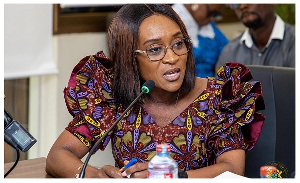The Sports Turf Research Institute (STRI) in the UK, organisers of the Groundsman of the Year Awards in the for the English FA, have ranked Mr. Frank Boahene, of Fulham FC in the top five for the second year running.
Dr. Stephen Baker, Head of Soils and Sports Surface Science of STRI, said that, ?Craven Cottage last season, placed fifth with an average mark of 4.25, compared to the mean for the division of 4.0. In fact, they were 0.08 of a mark from the third place and one of the highly commended rankings, and had received marks of either 4 or 5 for every game until March 2005?. He added that, ? I have had the pleasure of doing the Groundsman of the Year Awards for eleven years and this is undoubtedly the best marks ever for Craven Cottage, many congratulations to you and all your staff.
This season, Fulham FC was ranked ?a most credible fifth, with an average marks of 4.19 compared to the mean for the division of 3.92? remarked Dr. Baker.
The achievement is even more incredible since among the top ten ranked grounds, Craven Cottage is the only one without underground heating, or the latest scientific appliances only natural practices.
Highbury, the home of Arsenal FC uses SGL lighting rigs at Highbury to maintain grass coverage at summer levels during the winter months, and will be taking them to the new stadium. With all this new technology in place, we are confident that Arsenal will benefit from playing on one of the best pitches in the world."
"This will be the Rolls Royce of pitches," says John Hewitt, the designer. "Everything will be in place to ensure Arsenal always have a top quality surface to play on all year round." says John. Construction of Emirates Stadium started in February 2004 by contractors Sir Robert McAlpine, a year later, John was able to start work on the initial pipe installation for the under soil heating and the Forced Air Ventilation and Vacuum System (FAVVS).
This system, developed over many years, is a ducted vacuum and air pressure system which can carry out two operations. Firstly, cool, fresh air can be blown into the pitch, supplying additional oxygen to the crucial area around the roots of the grass plants. This provides aerobic conditions in which the grass can thrive, and reduces the risk of a black layer forming. In the vacuum phase, any excess water can be drawn down away from the surface to reduce the risk of waterlogging during heavy rainfall. The under soil heating is hot water gas fired, and uses flue gases from the air system, which makes the closed system 100 per cent energy efficient. There will also be a pop-up irrigation system, a dedicated running track and fully retractable advertising boards around the playing area. Layers of drainage material will then be laid, before the specially designed lower and upper root zones are constructed, using yet another John Hewitt invention, Fytozone. This incorporates synthetic loose fibres within the upper root zone material which gives added stability. The surface will then be stitched with Desso fibres, before overseeding with Advanta?s MM60 seed mixture.
?I am proud of my staff, and would say it was a team effort intimated, Mr. Frank Boahene? Frank Boahene, is the Head of Corporate Grounds of Fulham FC, and consults for the Ghana and Kenya governments on pitch maintenance.
When the question was put to him if this could be replicated in Ghana, Frank Boahene said we have the best conditions for growing grass in Africa, and soil analysis tests done shows that Ghana has no excuse to give in achieving international standards, as we have the right climatic conditions. We need to invest for our pitches to be constructed by professionals this way it is cheaper to maintain.
To do a good job, in England, costs in the region of ?1 million. He thinks that kind of quality can be achieved for around half that figure, and for that, you will get a pitch which our international players can play on without fear of injury due to the bad state of our pitches.
Mr Boahene said in Ghana, we spend a lot of emphasis on the stadium structure itself leaving very little attention to the pitch itself. ?If you tell someone it will cost about ?500,000.00 to construct the pitch, the first remark will be why should it cost so much, is it not just growing grass??. Pitch construction is a lot more than that. We still use water hose to wet our pitches, sometimes at midday, and it is ubsurd. In Kenya, my recommendations to the Sports Ministry on their national staduin were fully taken including pop-up underground irrigation systems, which are autamated and within one year, they have an excellent pitch. Ghana can still achieve this before CAN 2008, but time is running out.
Soccer News of Sunday, 30 April 2006
Source: --












